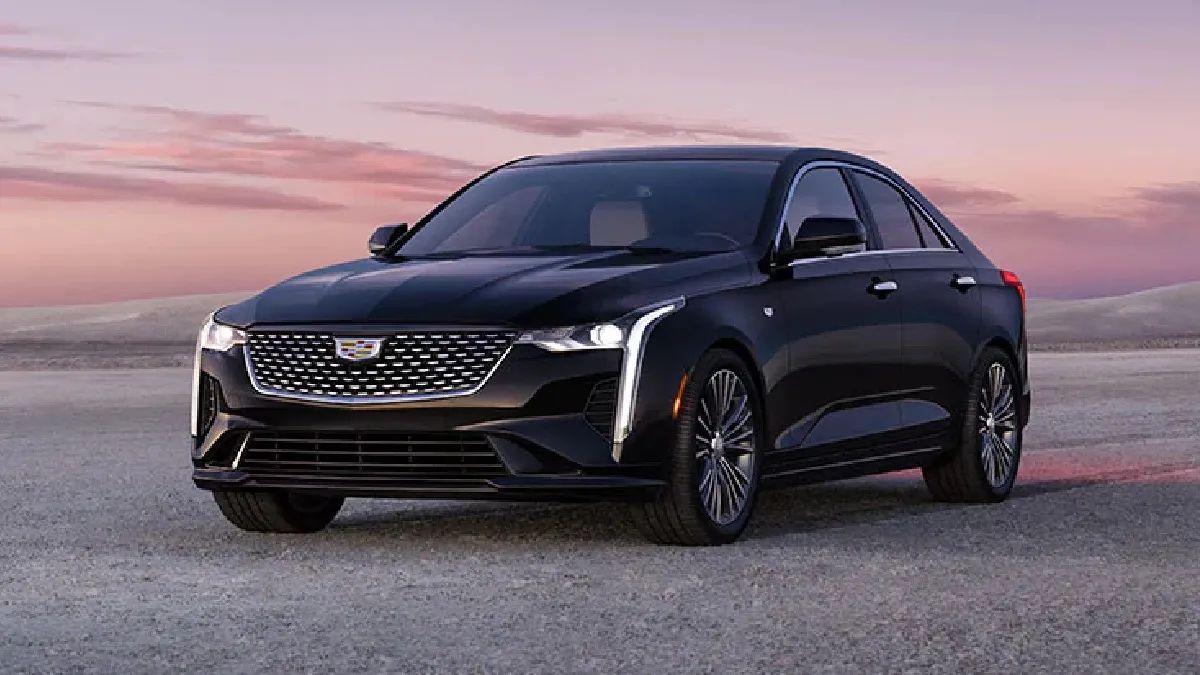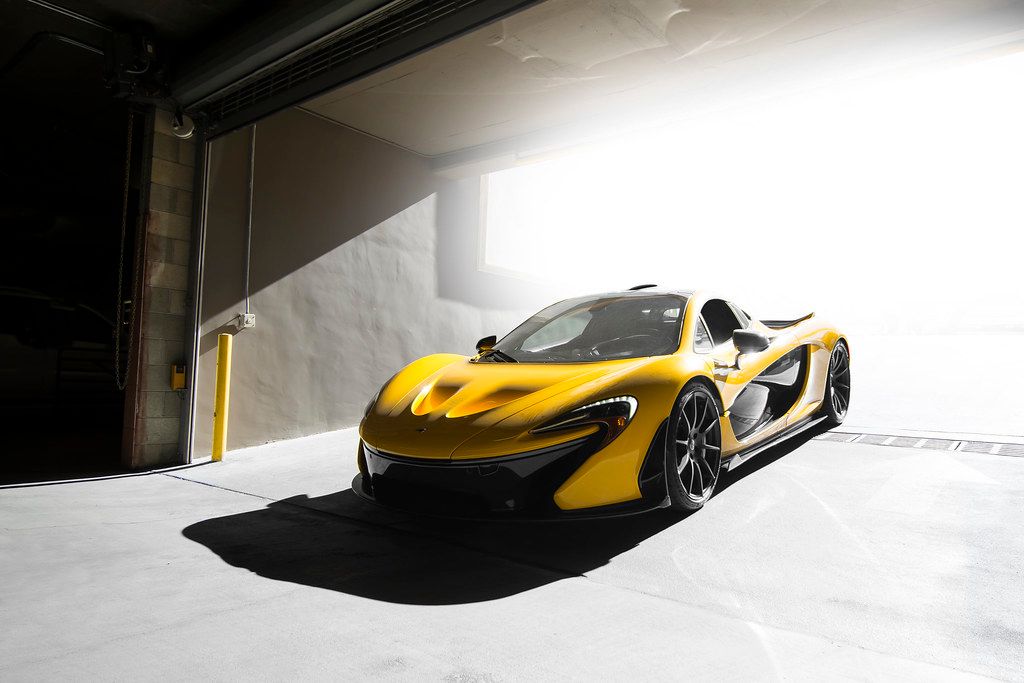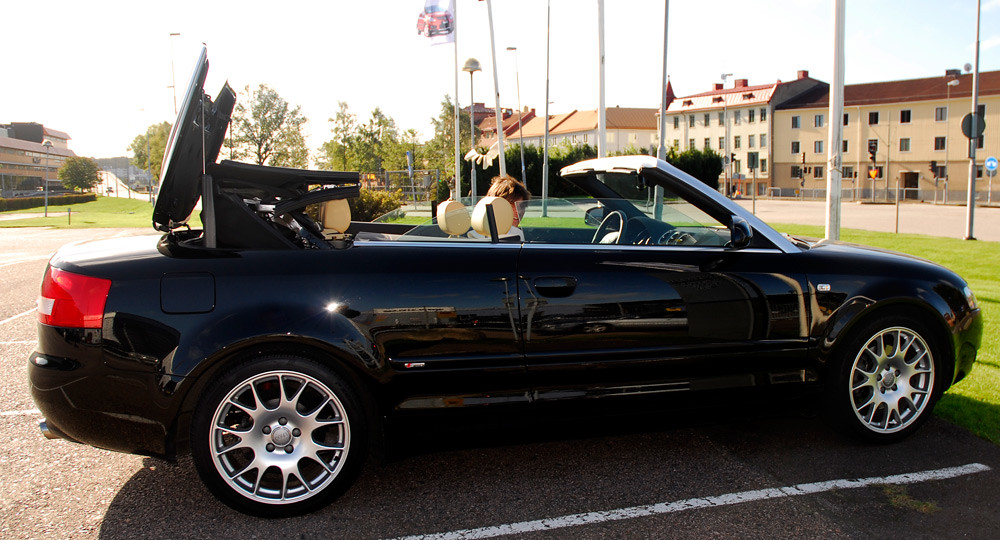
The automotive world is a vibrant tapestry, woven with threads of innovation, passion, and sometimes, a healthy dose of nostalgia. We often find ourselves reminiscing about those iconic vehicles that defined an era, cars that were once the pinnacle of desire, commanding attention and admiration from every angle. There’s a certain magic in the machines that capture our collective imagination, inspiring dreams of open roads and exhilarating drives.
However, not every automotive narrative ends with a timeless classic revered by generations. For every gleaming legend that ages gracefully into vintage status, there are countless others that, for various reasons, stumble and lose their way. They begin as beacons of style or performance, promising much, only to see their spark diminish, their cachet erode, and their appeal fade into obscurity or, worse, infamy.
It’s a tough pill to swallow for any enthusiast, but understanding these declines offers a fascinating, sometimes brutally honest, look into the fickle nature of the automotive market and the perils of missteps in design, engineering, or marketing. So, buckle up as we take a deep dive into the first half of our list, peeling back the layers on six models that, despite their initial promise, ultimately lost their once-desirable luster. These are the tales of ambition meeting reality, and how even the brightest stars can dim.
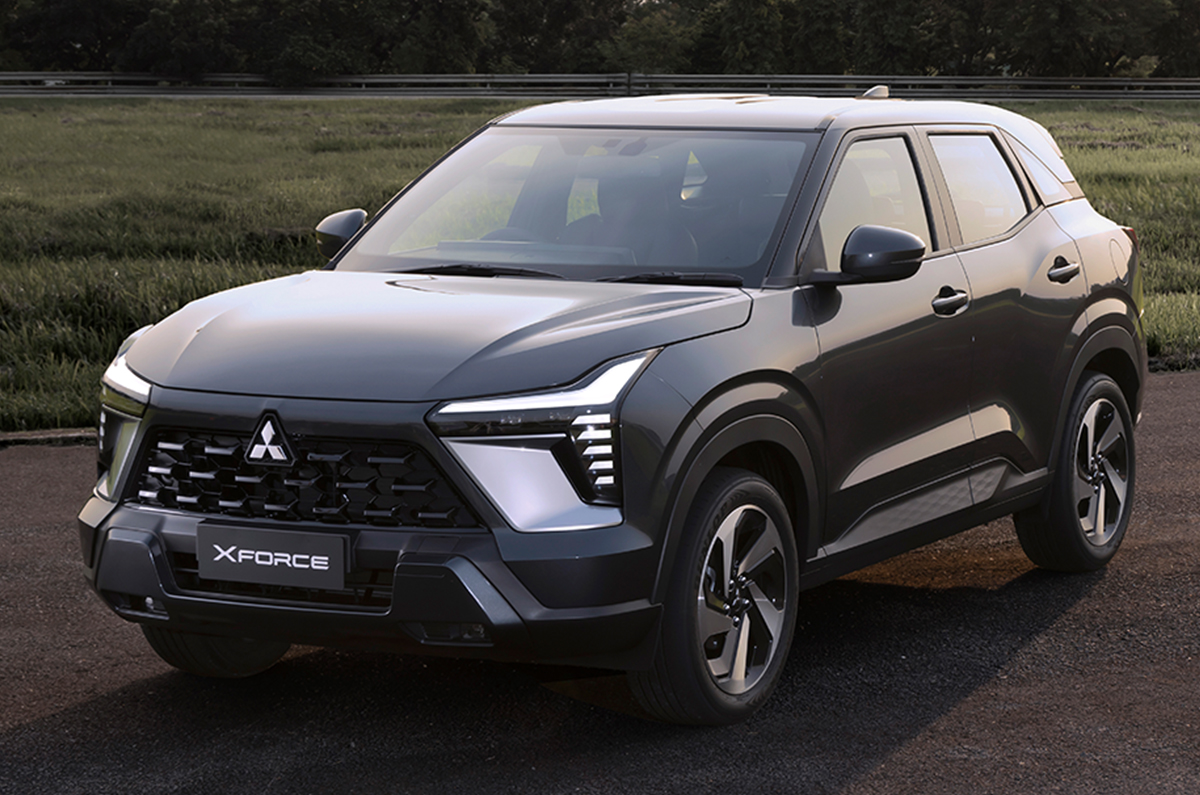
1. **Mitsubishi Eclipse (Fourth Generation, 2006–2012)**The Mitsubishi Eclipse, a nameplate that once conjured images of thrilling sports car performance and sharp, engaging handling, held a special place in the hearts of enthusiasts. The first two generations, especially, were celebrated for their potent engines, aggressive styling, and a spirit that begged to be driven hard. They embodied an accessible sports car ethos, making them legendary among a dedicated fanbase.
But then came the fourth generation, rolling onto the scene in the late 2000s, and it felt like a completely different beast, or rather, a tamed one. This iteration “shifted gears” in a way that left many scratching their heads. The raw, unadulterated performance and the precise handling that had defined its predecessors were conspicuously absent, replaced by something far less exhilarating.
This was a car that simply “lacked the raw performance and sharp handling that made earlier models legendary.” It tried to appeal to a broader audience, perhaps, but in doing so, it alienated the very “enthusiasts who had embraced the first two generations.” The magic was gone, the edge blunted, and what was once a thrilling contender became just another coupe that ultimately “fell short of winning over the enthusiasts.” It’s a classic example of losing your core identity in pursuit of mass appeal.
Car Model Information: 2007 Mitsubishi Eclipse Spyder GS
Name: Mitsubishi Eclipse
Caption: Fourth-generation Mitsubishi Eclipse GS coupe
Manufacturer: Mitsubishi Motors
Production: 1989–August 2011 (906,876 units)
ModelYears: 1990–2012
Assembly: Normal, Illinois
Class: Sport compact
BodyStyle: liftback,coupé
Layout: Front-engine, front-wheel-drive layout,Front-engine, four-wheel-drive layout
Predecessor: Mitsubishi Cordia,Mitsubishi Starion
Categories: 1990s cars, 2000s cars, 2010s cars, All-wheel-drive vehicles, All articles with unsourced statements
Summary: The Mitsubishi Eclipse is a sport compact car which was manufactured and marketed by Mitsubishi over four generations in the 1990–2012 model years. A convertible body style was added during the 1996 model year.
The first two generations were marketed simultaneously as rebadged variants, including the Eagle Talon and Plymouth Laser — and were a byproduct of Mitsubishi Motors and Chrysler Corporation’s close alliance. Their partnership in turn gave rise to Diamond-Star Motors (DSM). In Japan, the first two generations were sold at a specific Japanese retail chain called Mitsubishi Car Plaza. The third, 2000–2005 generation shared an extended wheelbase variant of their platform with the Chrysler Sebring and Dodge Stratus. In May 2005, the fourth, and final generation Eclipse was introduced, replacing the Chrysler platform used for the third generation with the PS platform.
According to Mitsubishi, the Eclipse was named after an unbeaten 18th-century English racehorse that won 18 races in a row and then retired.
At the end of August 2011, the final Eclipse was manufactured and auctioned for charity.
In 2017, Mitsubishi resurrected the Eclipse name on a compact crossover vehicle, called the Eclipse Cross.
Get more information about: Mitsubishi Eclipse
Buying a high-performing used car >>>
Brand: Mitsubishi Model: Eclipse
Price: $3,900 Mileage: 115,000 mi.
Read more about: Hold My Beer: These 14 Cars Went From Automotive Icons to Total Cringe Fails and We’re Not Sorry

2. **Cadillac DeVille (2000–2005)**Cadillac, a name synonymous with American luxury, traditionally represented the pinnacle of automotive elegance and comfort. The DeVille, in particular, was long seen as “a symbol of luxury,” a grand cruiser that exuded status and sophistication. For decades, owning a DeVille meant you had arrived, a statement car for those who appreciated understated grandeur.
However, the final generation of the Cadillac DeVille, hitting the market in the early 2000s, found itself in a rather unfortunate predicament. It was “overshadowed by its bland design and unimpressive performance,” a double whammy for a car striving for prestige. The once-distinctive Cadillac styling cues seemed to be watered down, resulting in an aesthetic that simply failed to inspire.
The brand’s attempt at “a more mass-market appeal” backfired spectacularly. Instead of broadening its reach, it “alienated long-time fans” who expected a certain level of distinctiveness and power from their Cadillac. This strategic miscalculation ultimately led to “its fall from grace in Cadillac’s lineup,” a stark reminder that sometimes, trying to be everything to everyone means you end up being nothing special to anyone.
Read more about: Hold My Beer: These 14 Cars Went From Automotive Icons to Total Cringe Fails and We’re Not Sorry

3. **Chevrolet Camaro (1982–1985)**The Chevrolet Camaro, the quintessential “American muscle car,” is a name that evokes images of roaring V8s, tire-shredding power, and a defiant spirit. It’s a legend born on drag strips and winding roads, a direct competitor to the Mustang in the eternal pony car wars. Generations of drivers have dreamed of feeling that raw power surge beneath the hood.
Then came the early 1980s, a period that many Camaro aficionados would rather forget. “Imagine driving a Camaro—the American muscle car—and instead of feeling the raw power under the hood, you’re stuck with an Iron Duke engine.” This 2.5L 4-cylinder engine was, to put it mildly, an insult to the Camaro nameplate. It was a paltry offering for a car steeped in performance heritage.
The context vividly describes this powertrain choice as “like serving a five-course meal on a plastic plate.” It wasn’t just underpowered; it fundamentally betrayed the essence of what a Camaro was supposed to be. During this period, “The Camaro’s spirit was completely crushed,” a sentiment echoed by every enthusiast who lamented the forced neutering of an icon. It’s a prime example of how even a legendary name can be undermined by corporate decisions, leaving a sour taste in the mouth of the faithful.
Car Model Information: 2018 Chevrolet Camaro 1LS
Name: Chevrolet Camaro
Manufacturer: Chevrolet
Production: 1966–2002,2009–2023
ModelYears: 1967–2002,2010–2024
Class: Pony car
BodyStyle: coupe,convertible
Platform: GM F platform,GM Zeta platform,GM Alpha platform
Layout: Front-engine, rear-wheel-drive layout
Categories: 1970s cars, 1980s cars, 1990s cars, 2+2 coupés, 2000s cars
Summary: The Chevrolet Camaro is a mid-size American automobile manufactured by Chevrolet, classified as a pony car. It first went on sale on September 29, 1966, for the 1967 model year and was designed to compete with the Ford Mustang. The Camaro shared its platform and major components with the Firebird, produced by General Motors’ Pontiac division that was also introduced for the 1967 model year.
Four distinct generations of the Camaro were developed before production ended in 2002. The nameplate was revived on a concept car that evolved into the fifth-generation Camaro; production started on March 16, 2009.
Production of the sixth generation of the Camaro ended in December 2023, for the 2024 model year.
Get more information about: Chevrolet Camaro
Buying a high-performing used car >>>
Brand: Chevrolet Model: Camaro
Price: $18,785 Mileage: 69,196 mi.
Read more about: Unearthing Hidden Performance: 14 Underrated Sports Cars That Defy Expectations for Today’s Performance Seekers
4. **Hummer H2 (2002–2009)**The Hummer H2 burst onto the scene in the early 2000s with an undeniable presence, initially “marketed as a tough, military-inspired SUV.” It was big, it was bold, and it certainly commanded attention, seemingly translating the rugged, no-nonsense capabilities of the original Humvee into a civilian package. For a brief moment, it captured the imagination of those seeking a vehicle that screamed dominance and adventure.
However, the tides of public perception turned swiftly for the H2. It “quickly became a symbol of excess in the 2000s,” a gas-guzzling behemoth that seemed tone-deaf to emerging environmental concerns. As fuel prices began their inexorable climb and “eco-consciousness grew,” the Hummer H2’s thirsty demeanor made it appear “more out of touch than ever.” Its sheer size and inefficient operation became a liability rather than a statement of power.
The H2’s downfall wasn’t just about its fuel consumption; it was about its perceived lack of practical value beyond its imposing facade. Its “lasting legacy? A reminder of what happens when style trumps substance.” It was a vehicle that prioritized an image of ruggedness over genuine utility, becoming a monument to conspicuous consumption rather than a respected off-roader. The H2’s story is a compelling case study in how cultural shifts can rapidly deflate a vehicle’s once-desirable image.
Car Model Information: 2003 Hummer H2
Name: Hummer H2
Manufacturer: AM General
Production: 2002–2009
ModelYears: 2003–2009
Assembly: Mishawaka, Indiana,Kaliningrad,designer = Clay Dean (2000)
Class: Full-size SUV
BodyStyle: Sports utility vehicle,pickup truck
Platform: GMT800
Related: Chevrolet Silverado,Chevrolet Avalanche,Chevrolet Tahoe,Chevrolet Suburban,Cadillac Escalade
Layout: Front-engine, four-wheel-drive layout,four-wheel drive
Engine: General Motors LS-based small-block engine#LQ4
Transmission: 4L60E,4-speed 4L65E automatic (2005–2007),automatic transmission
Wheelbase: 122.8 in
Abbr: on – 6.2 L
Length: 203.5 in
Width: 81.3 in
Height: 2002–03: {{convert,77.8,in,mm,0,abbr=on
Weight: {{convert,6400,lb,kg,0,abbr=on
Categories: 2000s cars, AM General vehicles, All-wheel-drive vehicles, All articles needing additional references, Articles needing additional references from January 2024
Summary: The Hummer H2 is a full-size off-road SUV that was marketed by Hummer and built in the AM General facility under contract from General Motors from 2002 until 2009. It is based on a modified GMT820 GM three-quarter-ton pickup truck in the front and a half-ton 1500 frame in the rear. A four-door pickup truck version with a midgate that opens the vehicle’s interior to the external cargo bed was introduced for the 2005 model year as the H2 SUT (sport utility truck).
Get more information about: Hummer H2
Buying a high-performing used car >>>
Brand: Hummer Model: H2
Price: $12,490 Mileage: 152,679 mi.
Read more about: Hold My Beer: These 14 Cars Went From Automotive Icons to Total Cringe Fails and We’re Not Sorry
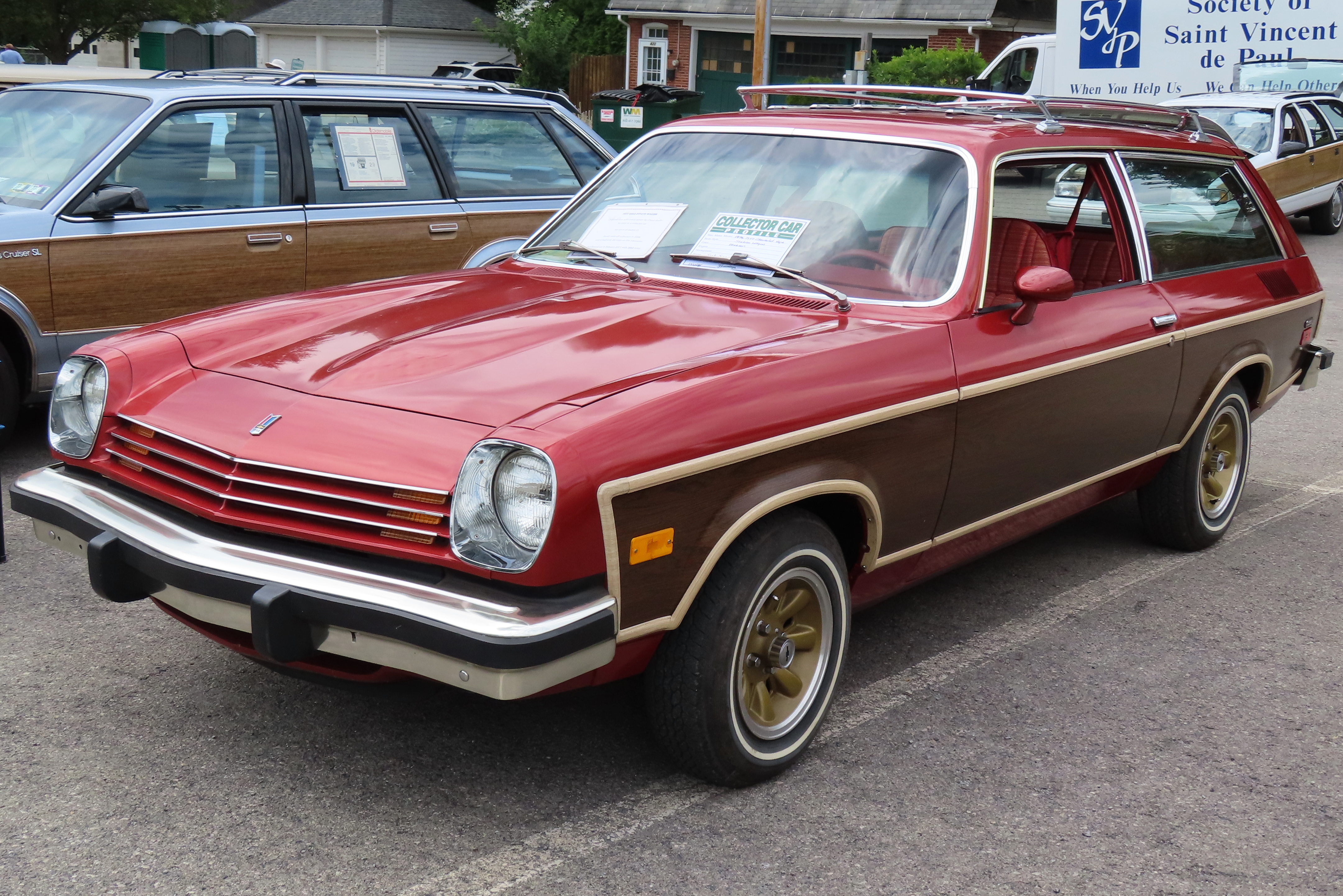
5. **Chevrolet Vega (1971–1977)**When the Chevrolet Vega debuted in 1971, it arrived with considerable fanfare and an impressive set of initial promises. It “made a splash with its lightweight body and fuel efficiency,” characteristics that were highly desirable in the burgeoning compact car market. It was a hopeful sign of American manufacturers’ ability to compete in a segment increasingly dominated by imports.
Yet, this initial optimism quickly unraveled into a cautionary tale of engineering shortcuts and a race to the bottom on cost. “However, within years, its aluminum engine block began to fail, and rust quickly took hold.” These weren’t minor inconveniences; they were fundamental flaws that severely compromised the car’s durability and reliability. The innovative design elements it boasted were overshadowed by catastrophic mechanical issues.
The consequences were devastating: “Sales plummeted, leaving the Vega as a reminder of the pitfalls of cost-cutting measures in automotive production.” Its reputation was irreparably damaged, transforming it from a promising contender into an infamous example of how corners cut in manufacturing can doom a product, no matter how appealing its initial concept. The Vega stands as a stark lesson in the long-term cost of short-term savings, a car that promised much but delivered widespread disappointment.
Car Model Information: 1976 Chevrolet Vega
Name: Chevrolet Vega
Caption: 1971 Chevrolet Vega
Aka: Vega 2300
Manufacturer: Chevrolet
Production: 1970–1977
ModelYears: 1971–1977
Assembly: Lordstown, Ohio
Predecessor: Chevrolet Corvair
Successor: Chevrolet Monza
Class: Subcompact car
BodyStyle: notchback,hatchback,station wagon,Panel van
Layout: FR layout
Platform: GM H platform (RWD)
Engine: {{cvt,2.3,L,cuin,0,Chevrolet 2300 engine
Transmission: manual transmission,4-speed manual,overdrive (mechanics),Torque-Drive 2-speed Powerglide requiring manual shifting,Powerglide,Turbo-Hydramatic
Wheelbase: cvt
Length: cvt
Width: cvt
Height: cvt
Weight: cvt
Related: Pontiac Astre,Chevrolet Monza,Pontiac Sunbird#First generation (1976–1980),Buick Skyhawk#First generation (1975–1980),Oldsmobile Starfire#Second generation (1975–1980)
Designer: Bill Mitchell (designer)
Categories: 1970s cars, All articles needing additional references, All articles with unsourced statements, Articles needing additional references from July 2023, Articles with short description
Summary: The Chevrolet Vega is a subcompact automobile manufactured and marketed by GM’s Chevrolet division from 1970 until 1977. Available in two-door hatchback, notchback, wagon, and sedan delivery body styles, all models were powered by an inline four-cylinder engine designed specifically for the Vega, with a lightweight aluminum alloy cylinder block. The Vega first went on sale in Chevrolet dealerships on September 10, 1970. Variants included the Cosworth Vega, a short-lived limited-production performance version introduced spring 1975.
The Vega received the 1971 Motor Trend Car of the Year. Subsequently, the car became widely known for a range of problems related to its engineering, reliability, safety, propensity to rust, and engine durability. Despite numerous recalls and design upgrades, Vega’s problems tarnished its reputation and that of General Motors. Production ended with the 1977 model year.
The car was named for Vega, the brightest star in the constellation Lyra.
Get more information about: Chevrolet Vega
Buying a high-performing used car >>>
Brand: Chevrolet Model: Vega
Price: $30,000 Mileage: 82,344 mi.
Read more about: Navigating the Road: Unpacking 14 Vehicles Known for Sketchy Driver Reputations and Notorious Reliability Issues

6. **Ford Pinto (1971–1980)**The Ford Pinto was conceived as an answer to the growing demand for small, affordable, and fuel-efficient cars in the 1970s. Indeed, upon its introduction, it “gained popularity in the 1970s as a small, affordable car option, with compact styling that made it a hit for city drivers.” It was a vehicle designed to meet a clear market need, and for a time, it performed its role admirably, becoming a common sight on American roads.
However, the Pinto’s story took a dark and infamous turn, forever cementing its place in automotive history for all the wrong reasons. “Fuel tank safety issues caused the Pinto to make headlines for all the wrong reasons.” The car’s design featured a fuel tank positioned precariously close to the rear axle, making it vulnerable to rupture and fire in even low-speed rear-end collisions.
“The car’s reputation was permanently tainted after a series of highly publicized accidents,” leading to immense public backlash and legal battles. The context plainly states: “If you’re wondering about the Pinto’s legacy, it’s a glaring example of how neglecting safety standards can doom a vehicle.” It became a symbol of corporate negligence, a grim reminder that even widespread popularity can’t shield a car from the consequences of severe safety flaws. The Pinto’s fall from grace was not just about declining sales; it was about a profound loss of trust.
Continuing our journey through the annals of automotive disappointment, we now turn our attention to six more models that, despite their initial promise or legendary status, ultimately faltered. These are the cars where critical misjudgments in engineering, the dilution of a once-proud brand, or unfortunate redesigns stripped them of their former glory, leaving enthusiasts scratching their heads and leaving a lasting mark on automotive history.
Car Model Information: 1980 Ford Pinto WAGON
Name: Ford Pinto
Caption: Ford Pinto
Manufacturer: Ford Motor Company
Aka: Mercury Bobcat
Production: September 1970 – July 1980
ModelYears: 1971–1980 (Pinto),1974–1980 (Bobcat)
Assembly: Edison, New Jersey,Milpitas, California
Designer: Robert Eidschun (1968)
Class: Subcompact car
BodyStyle: Sedan (automobile),sedan delivery,station wagon,hatchback
Related: #Mercury Bobcat (1974–1980),Ford Mustang (second generation)
Layout: Front-engine, rear-wheel-drive layout
Chassis: Unibody
Engine: unbulleted list
Abbr: on
Disp: Ford Cologne engine
Transmission: unbulleted list
Wheelbase: 94.0 in
Length: 163 in
Width: 69.4 in
Height: 50 in
Weight: convert
Predecessor: Ford Cortina#Mark II (1966–1970)
Successor: Ford Escort (North America)
Categories: 1980s cars, Articles with short description, Cars discontinued in 1980, Cars introduced in 1970, Commons category link from Wikidata
Summary: The Ford Pinto is a subcompact car that was manufactured and marketed by Ford Motor Company in North America from 1970 until 1980. The Pinto was the first subcompact vehicle produced by Ford in North America.
The Pinto was marketed in three body styles throughout its production: a two-door fastback sedan with a trunk, a three-door hatchback, and a two-door station wagon. Mercury offered rebadged versions of the Pinto as the Mercury Bobcat from 1975 until 1980 (1974–1980 in Canada). Over three million Pintos were produced over its ten-year production run, outproducing the combined totals of its domestic rivals, the Chevrolet Vega and the AMC Gremlin. The Pinto and Mercury Bobcat were produced at Edison Assembly in Edison, New Jersey, St. Thomas Assembly in Southwold, Ontario, and San Jose Assembly in Milpitas, California.
Since the 1970s, the safety reputation of the Pinto has generated controversy. Its fuel-tank design attracted both media and government scrutiny after several deadly fires occurred when the tanks ruptured in rear-end collisions. A subsequent analysis of the overall safety of the Pinto suggested it was comparable to other 1970s subcompact cars. The safety issues surrounding the Pinto and the subsequent response by Ford have been cited widely as business ethics and tort reform case studies.
Get more information about: Ford Pinto
Buying a high-performing used car >>>
Brand: Ford Model: Pinto
Price: $5,951 Mileage: 107,000 mi.
Read more about: Gear Grinders and Road Rogues: Unmasking the 1970s’ Most Hated Cars That Still Haunt Our Automotive Dreams

7. **Cadillac Cimarron (1982–1988)**The Cadillac Cimarron is a name that still elicits groans from automotive enthusiasts, a true cautionary tale in brand management. This was a car that arrived with Cadillac’s prestigious legacy on its shoulders, only to deliver a proposition that was, frankly, bewildering. The very idea of a Cadillac being “tied to the likes of the Chevrolet Cavalier” felt like an unforgivable act of brand dilution, signalling that the marque was losing its way and desperately attempting to compete in a segment ill-suited to its heritage.
This ill-fated experiment proved catastrophic, severely “putting Cadillac’s prestigious reputation at risk.” Customers expecting Cadillac refinement instead received a thinly disguised compact car, devoid of the gravitas and unique engineering that defined the brand. It epitomized “critical misjudgments in engineering” and a severe case of “brand dilution,” utterly failing to deliver on the promise of luxury or performance. The Cimarron was underpowered, felt cheap, and its styling did little to differentiate it from its humble stablemates.
Ultimately, the Cimarron carved out a permanent place in automotive infamy, a monument to what happens when a premium badge is slapped onto an economy car. It became a stark reminder that some shortcuts are simply too costly, threatening to drag down the entire brand’s reputation. This car didn’t just lose its cachet; it actively undermined Cadillac’s standing, illustrating how quickly prestige can evaporate under the weight of such a misstep.
Read more about: Hold My Beer: These 14 Cars Went From Automotive Icons to Total Cringe Fails and We’re Not Sorry

8. **Chevrolet Chevelle/Malibu (1964–1977)**The Chevrolet Chevelle once embodied the raw, untamed spirit of American muscle, truly “the pride of American muscle.” Early iterations were titans, dominating drag strips and turning heads with their aggressive stance and roaring V8 power. They were pure, unadulterated automotive passion, cherished by anyone who loved the open road and the smell of burning rubber, setting the standard for an era where horsepower reigned supreme.
However, as the 1970s brought oil crises and emissions regulations, the Chevelle underwent a disheartening transformation. By the late ’70s, its Malibu variant “took the Chevelle in a completely different direction—bland, uninspiring, and far removed from the muscle car glory days.” This wasn’t merely evolution; it was a fundamental identity crisis, a “betrayal of its roots” that sacrificed its aggressive posture and visceral performance for economy and practicality.
The “unfortunate redesigns” profoundly stripped the Chevelle of its former glory, diluting a robust brand into a shadow of its past self. This saga serves as a poignant reminder that while adapting to market demands is crucial, losing touch with a vehicle’s core appeal can be fatal. Enthusiasts watched as a legend was tamed, becoming just another car in a sea of similar sedans, a sad testament to how changing times can dim even the brightest stars.
Car Model Information: 1969 Chevrolet Chevelle SS
Name: Chevrolet Chevelle
Caption: 1970 Chevrolet Chevelle SS 396 Sport Coupe
Manufacturer: Chevrolet
Production: 1963–1977
ModelYears: 1964–1977
Class: Mid-size
Platform: GM A platform (RWD)
Layout: FR layout
Successor: Chevrolet Malibu
Categories: 1970s cars, All articles needing additional references, All articles that may contain original research, All articles with specifically marked weasel-worded phrases, All articles with unsourced statements
Summary: The Chevrolet Chevelle is a mid-sized automobile that was produced by the Chevrolet division of General Motors (GM) in three generations for the 1964 to 1977 model years. Part of the GM A-body platform, the Chevelle was one of Chevrolet’s most successful nameplates. Body styles included coupes, sedans, convertibles, and station wagons. The “Super Sport” versions were produced through the 1973 model year and Lagunas from 1973 through to 1976.
After a four-year absence, the El Camino was reintroduced as part of the new Chevelle lineup in 1964.
From 1964 to 1969, GM of Canada sold a modified version of the Chevelle that included a Pontiac-style grille, and a LeMans instrument panel, marketed as the Beaumont.
The Malibu was the top-of-the-line model to 1972, and completely replaced the Chevelle nameplate starting with the redesigned, and downsized 1978 model year.
Get more information about: Chevrolet Chevelle
Buying a high-performing used car >>>
Brand: Chevrolet Model: Chevelle
Price: $119,550 Mileage: 93 mi.

9. **Pontiac GTO (1964–1974)**The Pontiac GTO isn’t just a car; it’s an institution, widely “considered the godfather of muscle cars.” From its inception, the GTO commanded respect, effectively inventing the genre with its raw power and undeniable street presence. It was the embodiment of performance and a symbol of automotive freedom, inspiring countless imitations and defining an era of exhilarating American motoring.
Yet, even legends are not immune to market forces. As the 1970s arrived, a perfect storm of rising insurance costs, stricter emissions, and the oil crisis began to erode the muscle car foundation. Consequently, “the GTO lost its edge in the 1970s due to declining performance and changing consumer tastes.” Its thunderous engines were detuned, aggressive styling softened, and the raw performance that defined it began to wane, diminishing its iconic status.
“It’s a sad tale of how a legend can lose its muscle.” The “passion” that once fueled the GTO’s adoration started to “fade” as it struggled to adapt to a world no longer prioritizing brute force above all else. Its decline wasn’t just about weaker engines; it was about losing its identity and purpose, becoming a poignant reminder that even the most formidable automotive icons are vulnerable to the relentless march of time and shifting priorities.
Car Model Information: 1966 Pontiac GTO Coupe
Name: Pontiac GTO
Caption: 2005 Pontiac GTO
Manufacturer: Pontiac (automobile),Holden
Class: Mid-size car,Compact car,Mid-size car
Production: 1963–1974,2003–2006
Predecessor: Pontiac Tempest
Layout: Front-engine, rear-wheel-drive layout
ModelYears: 1964-1974 2004-2006
Categories: 1970s cars, 2000s cars, All articles with unsourced statements, Articles with short description, Articles with unsourced statements from October 2008
Summary: The Pontiac GTO is a front-engine, rear-drive, two-door, and four-passenger automobile manufactured and marketed by the Pontiac division of General Motors over four generations from 1963 until 1974 in the United States — with a fifth generation made by GM’s Australian subsidiary, Holden, for the 2004 through 2006 model years.
The first generation of the GTO is credited with popularizing the muscle car market segment in the 1960s. Some consider the Pontiac GTO to have started the trend with all four domestic automakers offering a variety of competing models.
For the 1964 and 1965 model years, the GTO was an optional package on the intermediate-sized Pontiac LeMans. The 1964 GTO vehicle identification number (VIN) started with 22, while the 1965 GTO VIN began with 237. The GTO was designated as a separate Pontiac model from 1966 through 1971 (VIN 242…). It became an optional package again for the 1972 and 1973 intermediate LeMans. For 1974, the GTO was an optional trim package on the compact-sized Ventura.
The GTO model was revived for the 2004 through 2006 model years as a captive import for Pontiac, a left-hand drive version of the Holden Monaro, itself a coupé variant of the Holden Commodore.
Get more information about: Pontiac GTO
Buying a high-performing used car >>>
Brand: Pontiac Model: GTO
Price: $59,991 Mileage: 4,408 mi.
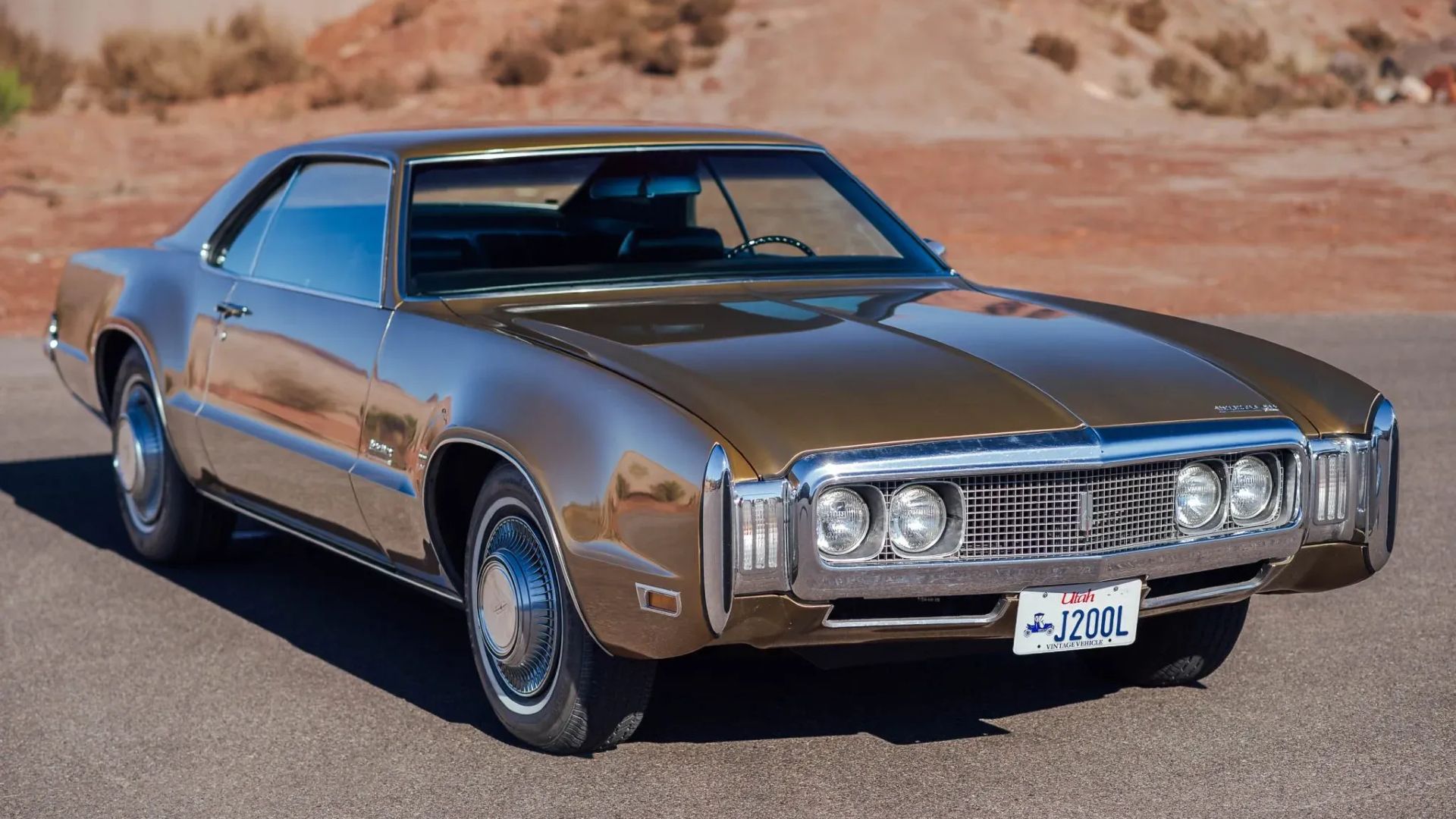
10. **Oldsmobile Aurora (1995–1999 And 2001–2003)**The first-generation Oldsmobile Aurora was a revelation, “initially admired for its sophisticated styling and technology.” It represented a bold departure, offering a “completely unique design and identity on a unique chassis only shared with the Riviera.” Its “futuristic interior that was genuinely nice” further cemented its appeal, promising a sleek, contemporary luxury experience and a glimmer of hope for Oldsmobile’s future.
Despite this strong start, the Aurora soon mirrored Oldsmobile’s broader struggles, becoming “a symbol of Oldsmobile’s inability to compete in a changing market.” “Poor sales” reflected its challenging position, caught between traditional buyers and those seeking European-influenced luxury. The true misstep, however, came with the second generation, a stark example of “unfortunate redesigns that stripped them of their former glory.”
This later iteration transformed the distinctive original into “a blobby car on the ubiquitous chassis and design shared with other GM cars,” filled with the “cheap extruded plastic common on every GM car at the time.” The distinctiveness was sacrificed for cost-cutting and platform sharing, sealing its fate. The Aurora’s story reminds us that “even great design can’t overcome shifting market demands,” especially when subsequent versions fail to honor their predecessors’ spirit, ultimately leading to a profound loss of cachet.
Car Model Information: 2001 Oldsmobile Aurora 3.5
Name: Oldsmobile Aurora
Caption: 1997 Oldsmobile Aurora
Manufacturer: Oldsmobile
Production: January 24, 1994 – June 25, 1999,November 1, 1999 – March 28, 2003
ModelYears: 1995–1999,2001–2003
Assembly: Orion Township, Michigan
BodyStyle: sedan (automobile)
Class: Full-size,luxury car
Layout: Front-engine, front-wheel-drive layout
Predecessor: Oldsmobile 98,Oldsmobile 88
Categories: All articles with unsourced statements, Articles with short description, Articles with unsourced statements from January 2023, Cars discontinued in 2003, Cars introduced in 1994
Summary: The Oldsmobile Aurora is a luxury sedan, manufactured and marketed by General Motors from 1994 until 2003 over two generations — sharing platforms with Buick Riviera and using the Cadillac-derived G platform. At the time of production, the Aurora was the flagship vehicle in the Oldsmobile lineup. It originated as the 1989 Oldsmobile tube car concept.
The Aurora replaced the Toronado coupe and eventually the Oldsmobile 98, LSS and Regency in the Oldsmobile range — using V8 and V6 engines. It was equipped with a four-speed automatic transmission.
Get more information about: Oldsmobile Aurora
Buying a high-performing used car >>>
Brand: Oldsmobile Model: Aurora
Price: Not Priced Mileage: 156,335 mi.
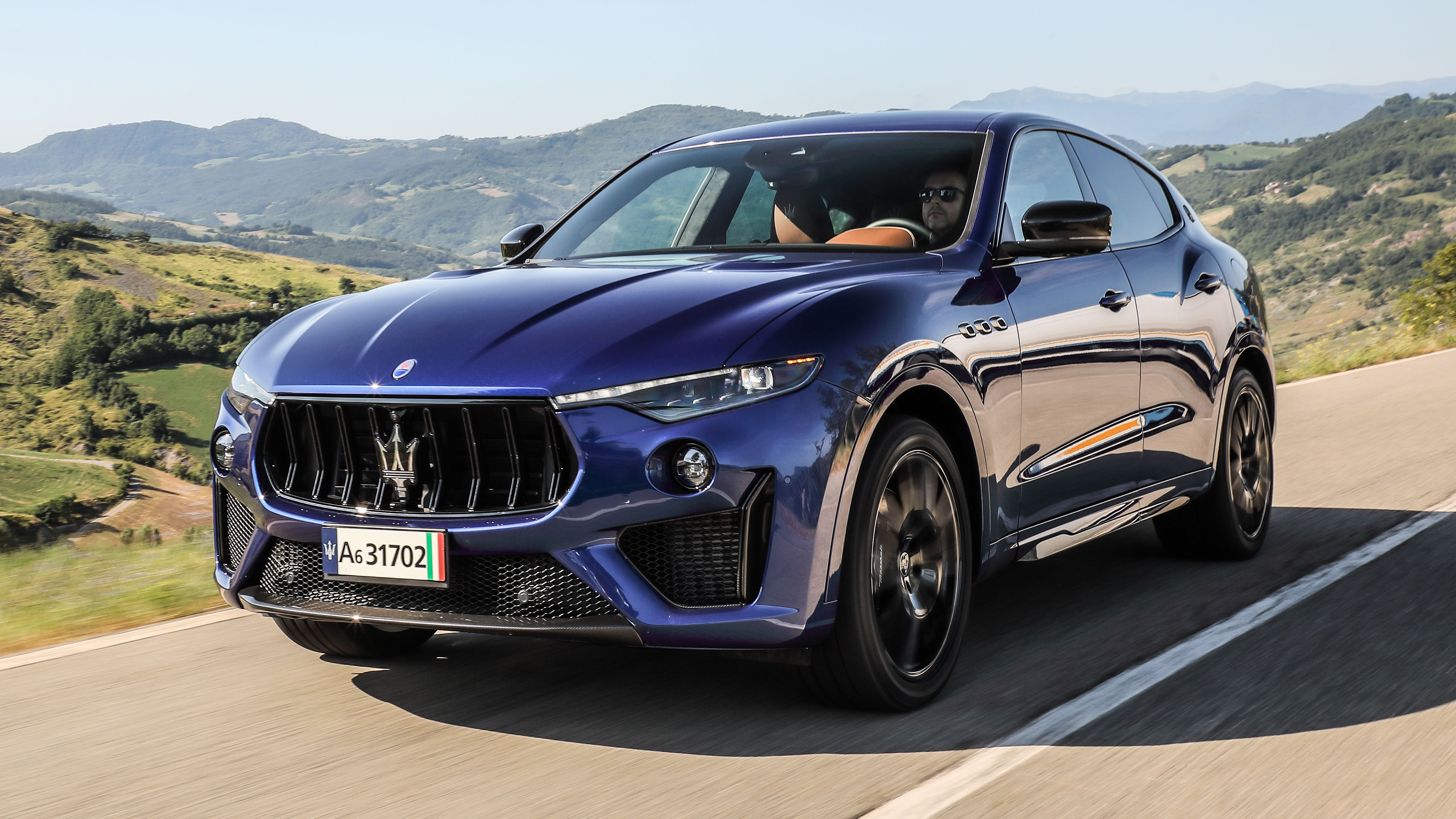
11. **Maserati Biturbo (1981–1994)**The Maserati Biturbo initially presented an enticing proposition: “Italian flair and affordable price,” promising “a dream car for those looking for a taste of luxury on a budget.” For many, it represented an accessible entry into the exclusive world of exotic European motoring, a stylish coupe with a potent twin-turbo V6, seemingly blending passion with practicality.
However, this dream quickly soured, as the Biturbo rapidly earned “a notorious reputation for constant breakdowns and mechanical failures.” This wasn’t merely a minor inconvenience; it was a fundamental flaw that undermined the entire ownership experience. Instead of enjoying luxury, owners found themselves battling persistent issues, from electrical gremlins to engine troubles, transforming aspirational ownership into a costly, frustrating ordeal.
This was a classic case of “critical misjudgments in engineering” and a severe blow to brand integrity. The Biturbo’s persistent mechanical woes “quickly turned that dream into a nightmare,” irreversibly damaging its appeal and “stripping it of its former glory.” It stands as a profound lesson that no amount of “Italian flair” can compensate for a fundamental lack of quality and durability, illustrating how mechanical integrity is paramount for true automotive cachet.
Car Model Information: 1985 Maserati Biturbo Base
Name: Maserati Biturbo
Caption: Maserati Biturbo E
Manufacturer: Maserati
Production: 1981–1994
Assembly: Modena,Rho, Lombardy
Related: Maserati Shamal,Maserati Ghibli#Ghibli (AM336),Maserati Barchetta,Maserati Quattroporte#Quattroporte IV,Maserati Karif
Designer: Pierangelo Andreani (1977),Marcello Gandini,Zagato
Class: Grand tourer
BodyStyle: 2+2 (car body style),coupé,sedan (car),Cabriolet (automobile)
Layout: Front-engine, rear-wheel-drive layout
Engine: twin-turbocharged,2.5 L twin-turbocharged 90° V6,2.8 L twin-turbocharged 90° V6
Transmission: ZF Friedrichshafen,Automatic transmission,ZF Friedrichshafen
Wheelbase: {{convert,2,514,mm,in,1,abbr=on
Length: {{convert,4,150,mm,in,1,abbr=on
Abbr: on (228)
Width: {{convert,1,710,mm,in,1,abbr=on
Height: {{convert,1,310,mm,in,1,abbr=on
Successor: Maserati Ghibli#Ghibli (AM336),Maserati Quattroporte#Quattroporte IV
Sp: uk
Categories: 1990s cars, All articles needing additional references, All articles with unsourced statements, Articles needing additional references from November 2019, Articles needing additional references from October 2010
Summary: The Maserati Biturbo is a family of executive grand tourers produced by Italian automobile manufacturer Maserati between 1981 and 1994. The original Biturbo was a two-door, four-seater notchback coupé (of somewhat smaller dimensions than the BMW 3 Series of the time) featuring, as the name implies, a two-litre V6 engine with two turbochargers and a luxurious interior.
The car was designed by Pierangelo Andreani, Chief of Centro Stile Maserati up to 1981, somewhat influenced by the design of the then recent Quattroporte III (penned by Italdesign Giugiaro).
All Maserati models introduced from the Biturbo’s inception in 1981, until 1997, were based on variants of the original Biturbo architecture, including the later grand tourers like the Shamal and Ghibli II, as well as the 1994 fourth generation Quattroporte, which used an evolved and slightly stretched (to 2.65 m / 104.3 in wheelbase) Biturbo Saloon platform.
The Barchetta, while of a different layout entirely, used an ultimate version of the Biturbo V6 engine.
Get more information about: Maserati Biturbo
Buying a high-performing used car >>>
Brand: Maserati Model: Biturbo
Price: $13,899 Mileage: 18,319 mi.
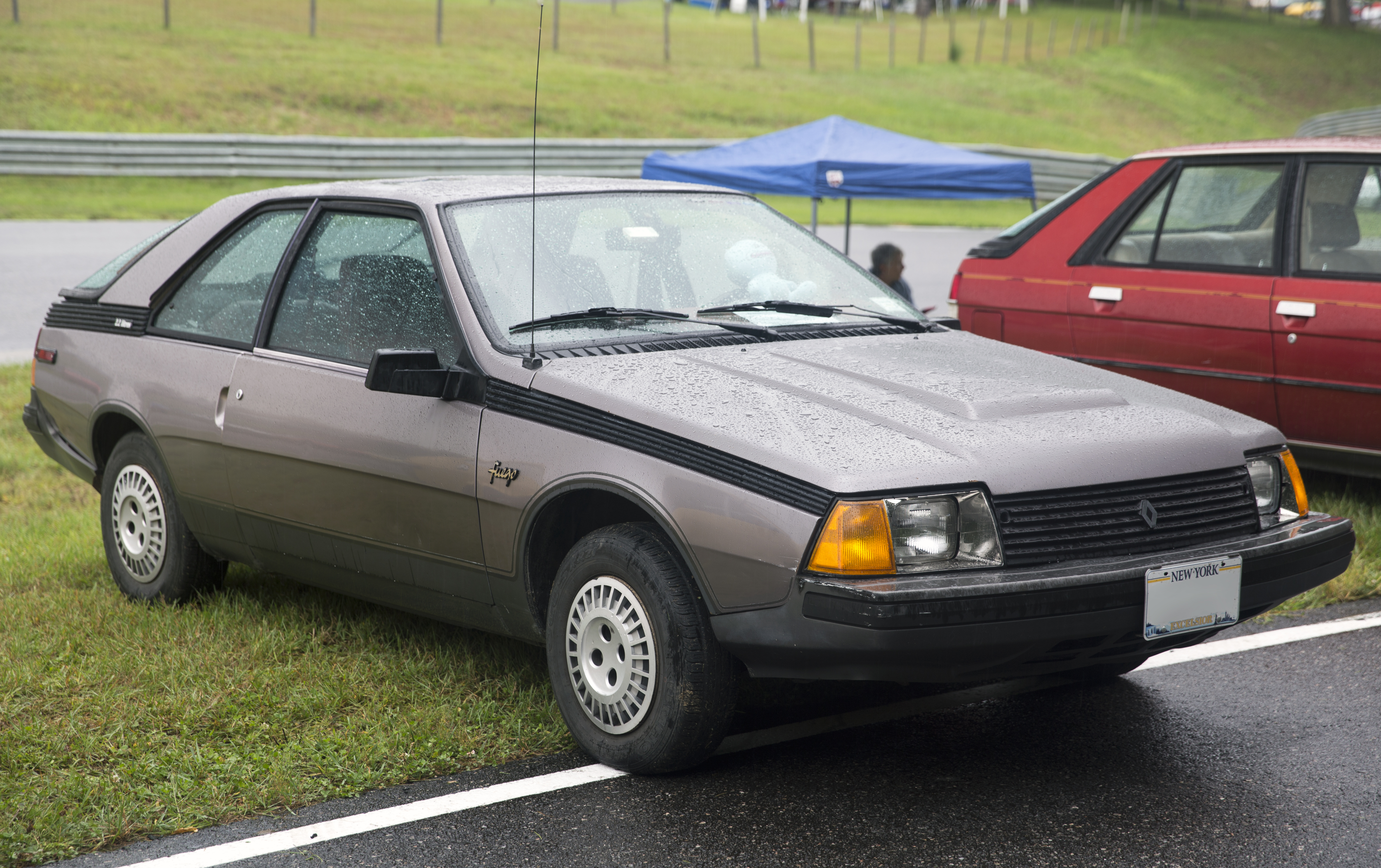
12. **Renault Fuego (1982–1984)**The Renault Fuego, at first glance, exuded European chic. With its sleek lines and modern aesthetics, it “looked like a stylish coupe,” a fresh design intended to capture the attention of drivers seeking something distinct. It projected an image of sporty ambition, appearing to have all the makings of a desirable, unique offering in the American market.
Beneath that appealing exterior, however, the Fuego harbored a pervasive lack of reliability. It quickly “gained a reputation for being unreliable,” a whisper that soon became a roar among frustrated owners. “Electrical malfunctions and engine issues” were common, transforming a potentially exciting ownership into a constant struggle. This wasn’t just a hiccup; it was a design and engineering oversight that ultimately led to its “quick exit from the U.S. market.”
The Fuego’s “premature demise highlights the importance of consistent quality, even in flashy models.” It’s a poignant reminder that while aesthetics can draw people in, it’s the underlying engineering and reliability that ensure lasting appeal. This car’s brief, troubled run meant it “lost its cachet” almost as quickly as it arrived, a victim of its mechanical shortcomings and a stark illustration that style without substance is a recipe for automotive disappointment.
Our journey through these automotive missteps reveals a consistent truth: even the most promising designs and iconic nameplates are vulnerable to the capricious whims of the market and the harsh realities of execution. Whether it’s “critical misjudgments in engineering,” the dilution of a once-proud “brand,” or “unfortunate redesigns” that strip away a car’s very essence, the path from desirability to disappointment is paved with lessons for both manufacturers and enthusiasts. These cars, once beacons of aspiration, now stand as fascinating case studies in what happens when the delicate balance of innovation, quality, and market understanding is lost. They remind us that true automotive cachet isn’t just built on initial spark, but on enduring substance and a consistent connection to what truly defines a legendary machine.


